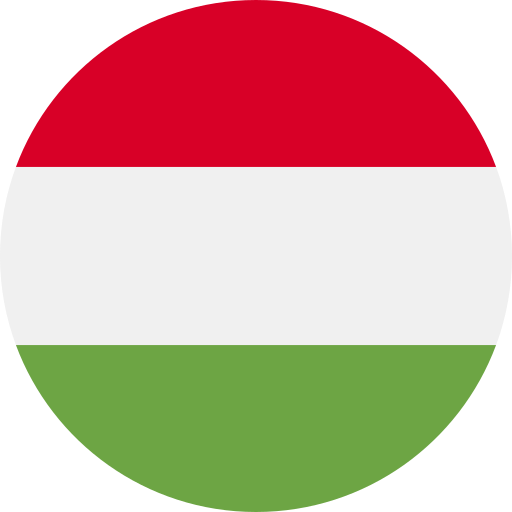Key Takeaways
- Authenticity in Storytelling: Hungarian dialects enhance the authenticity of characters and narratives in TV and film, fostering a deeper connection with viewers.
- Diverse Linguistic Landscape: With over 30 recognized dialects, regional variations reflect Hungary’s rich cultural history and influence storytelling through unique phonetic characteristics.
- Impact on Audience Engagement: Characters speaking in native dialects create relatable experiences for viewers, leading to greater emotional investment in the storyline.
- Role of Voice Actors: Skilled voice talent plays a crucial role in accurately portraying these dialects, ensuring performances resonate authentically with audiences by capturing regional nuances.
- Challenges in Representation: Accurately representing dialects poses challenges, including limited access to skilled voice actors and balancing artistic interpretation with linguistic authenticity.
- Cultural Significance: Integrating Hungarian dialects into visual media honors cultural heritage while captivating global audiences through relatable performances that reflect real-life complexities.
Ever wondered how Hungarian dialects shape the storytelling in TV and film? These unique variations not only add authenticity but also deepen your connection to the characters and their worlds. From heartwarming comedies to gripping dramas, understanding these dialects can enhance your viewing experience.
Overview Of Hungarian Dialects
Hungarian dialects showcase a rich tapestry of linguistic diversity across the country. These variations stem from regional influences, historical developments, and cultural interactions. In total, there are over 30 recognized dialects, with the most prominent ones including the Northern, Southern, and Western dialect groups.
Each dialect features unique phonetic characteristics and vocabulary. For instance, speakers in Transylvania often incorporate Romanian loanwords into their speech patterns. Conversely, those in regions bordering Austria might reflect more German influences. Such distinctions not only enrich the language but also carry cultural significance that can enhance storytelling in TV and film.
In visual media like movies or series set in Hungary or featuring Hungarian characters, accurate representation of these dialects fosters authenticity. Viewers resonate more deeply with characters when they hear familiar accents or phrases that mirror real-life experiences. This connection elevates emotional engagement within narratives.
Voice actors play a crucial role in capturing these nuances through their performances. Skilled voice talent adeptly navigates various dialects to deliver convincing portrayals that respect regional identities. When casting for projects requiring Hungarian dialogue, understanding local dialects ensures authentic delivery and enhances overall production quality.
Producers benefit significantly from integrating diverse voice talents who specialize in different Hungarian dialects. By doing so, they create richer narratives that reflect society’s complexities while engaging audiences on multiple levels. Whether it’s comedy or drama, using appropriate regional dialect can transform a simple story into an immersive experience for viewers.
Ultimately, exploring the landscape of Hungarian dialects allows storytellers to craft relatable narratives that honor cultural heritage while captivating global audiences through compelling performances by talented voice artists.
Hungarian Dialects In Film
Hungarian dialects enrich film and television by adding authenticity to narratives and enhancing audience connections with characters. These unique linguistic variations reflect regional identities, allowing viewers to immerse themselves in the story.
Historical Context
Historically, Hungary’s diverse regions developed distinct dialects influenced by various cultures and languages. The Ottoman Empire, Austro-Hungarian rule, and neighboring countries shaped these dialects over centuries. This linguistic diversity plays a crucial role in storytelling, as films that accurately portray regional speech patterns resonate more deeply with local audiences. Such historical context provides filmmakers with a rich tapestry of language to draw from when crafting believable characters and settings.
Notable Movies Featuring Dialects
Several Hungarian films showcase the country’s rich tapestry of dialects. Films like „Sátántangó” use Southern dialects to convey the gritty realism of rural life, while comedies often employ Northern dialects for comedic effects. In „The Turin Horse,” the Western dialect adds depth to its somber narrative, highlighting cultural nuances that would resonate with local viewers.
Voice actors specializing in these dialects bring authenticity to performances through their nuanced delivery and understanding of regional variations. Their skills enable them to capture not just words but also emotions tied closely to specific accents or phrases. When filmmakers prioritize casting voice talent familiar with these intricacies, they create richer narratives that engage audiences on multiple levels.
Overall, integrating Hungarian dialects into film enhances storytelling by honoring cultural heritage while captivating global audiences through relatable performances.
Hungarian Dialects In Television
Hungarian dialects play a significant role in enriching television narratives. These unique variations add layers to storytelling, allowing audiences to connect more deeply with characters and their experiences.
Popular TV Series
Many popular TV series showcase the richness of Hungarian dialects. Shows like „Terápia” and „A mi kis falunk” effectively incorporate regional speech patterns, reflecting authentic cultural contexts. Characters’ dialogues resonate with viewers through familiar accents and phrases, making stories more relatable. The careful use of local dialects enhances character development, bringing them to life in a way that standardized language simply can’t achieve.
Influence On Viewers
The influence of accurate dialect representation in television is profound. Viewers often find themselves feeling closer to characters who speak in their native dialects or accents. This connection fosters emotional investment in the storyline. When voice actors skillfully deliver lines using specific regional nuances, they create an immersive experience that draws audiences into the narrative world.
With such profound impacts on storytelling, integrating diverse voice talents who specialize in various Hungarian dialects elevates productions significantly. Authentic portrayals not only honor Hungary’s linguistic diversity but also engage audiences on multiple levels by reflecting real-life societal complexities and emotions.
Cultural Significance Of Dialects
Hungarian dialects hold significant cultural value, especially in television and film. They enrich storytelling by providing authenticity to characters and their environments. When you hear a character speaking in their regional dialect, it feels more genuine and relatable. These nuances create deeper connections between viewers and the narratives being portrayed.
Dialects reflect Hungary’s diverse history, with over 30 variations shaped by regional influences. Each dialect group—Northern, Southern, Western—brings distinct phonetic characteristics that enhance dialogue. For instance, Transylvanian speakers may use Romanian loanwords while others near Austria incorporate German terms. This linguistic richness is crucial for accurate representation in visual media.
Voice actors play an essential role in bringing these dialects to life. Skilled voice talent can navigate various accents effortlessly, ensuring performances resonate authentically with audiences. The careful casting of voiceover artists who specialize in different Hungarian dialects strengthens narratives and reflects societal complexities.
Films like „Sátántangó” or „The Turin Horse” exemplify how effective dialogue enhances realism through local speech patterns. These stories engage local audiences because they mirror everyday conversations familiar to them. Popular series such as „Terápia” and „A mi kis falunk” skillfully integrate regional speech into character development, making plots more relatable.
When characters speak in native dialects, viewers often feel a stronger emotional connection to them. This immersive experience draws you into the narrative world and fosters investment in the storyline. Ultimately, integrating Hungarian dialects into film and television honors cultural heritage while captivating global audiences with authentic performances that resonate deeply across different backgrounds.
Challenges In Representation
Accurately representing Hungarian dialects in film and television presents several challenges. One significant issue involves the limited availability of skilled voice actors proficient in various dialects. While Hungary boasts over 30 dialects, not all voiceover talent possesses the expertise to deliver authentic performances that capture regional nuances. This gap can lead to misrepresentation, diminishing the authenticity of characters and narratives.
Another challenge lies in balancing artistic interpretation with linguistic authenticity. Directors may prioritize creative expression over accurate dialect use, resulting in a disconnect between character portrayal and cultural realities. When local audiences hear familiar phrases or accents distorted for dramatic effect, it can erode viewer trust and engagement.
The subtleties of different dialects also pose technical hurdles during production. Voice artists must navigate phonetic variations while maintaining clarity for diverse audiences. Accents that are too heavy may alienate viewers unfamiliar with them, while lighter interpretations might overlook essential cultural markers.
Moreover, casting decisions often favor recognizable names or established performers rather than those who specialize in specific dialects. This practice can sideline talented voiceover actors who bring an invaluable depth to regional portrayals but lack mainstream recognition.
Finally, there’s an ongoing challenge regarding audience expectations. Viewers accustomed to hearing their native dialect expect representation that resonates authentically on screen. When filmmakers overlook these expectations or fail to conduct proper research into local speech patterns, they risk disappointing their target audience.
Addressing these challenges requires collaboration among producers, directors, and voiceover professionals committed to authentic representation. By prioritizing linguistic diversity and investing in specialized talent capable of delivering genuine performances, filmmakers can create narratives that truly resonate with audiences across Hungary’s rich tapestry of dialects.
Conclusion
Understanding Hungarian dialects in film and television adds a rich layer to your viewing experience. These dialects not only enhance authenticity but also foster emotional connections with characters and their stories. By embracing the nuances of regional speech patterns, creators can craft narratives that resonate deeply with local audiences while captivating viewers globally.
When you watch a show or film that skillfully integrates these dialects, you’re likely to feel more engaged and invested in the storyline. The portrayal of authentic language reflects cultural heritage, inviting you into a world where every phrase carries meaning. Prioritizing accurate representation ensures that the diverse voices of Hungary are honored, enriching both storytelling and audience connection.
Frequently Asked Questions
What are Hungarian dialects and why are they important in storytelling?
Hungarian dialects are unique regional variations of the Hungarian language, influenced by cultural and historical factors. They enhance storytelling in television and film by providing authenticity, making narratives more relatable for viewers. By incorporating these dialects, creators can deepen emotional connections between characters and audiences.
How many Hungarian dialects exist?
There are over 30 distinct Hungarian dialects. These include Northern, Southern, and Western dialect groups, each with unique phonetic features and vocabulary shaped by their respective regions.
How do voice actors contribute to the representation of Hungarian dialects?
Voice actors play a crucial role in bringing Hungarian dialects to life. Skilled performers can accurately capture the nuances of various regional accents, enhancing character authenticity and allowing audiences to connect more deeply with the story.
Can you provide examples of films that use Hungarian dialects effectively?
Notable films like „Sátántangó” and „The Turin Horse” showcase the effective use of Hungarian dialects. These films incorporate regional speech patterns to convey realism and cultural depth, enriching the viewer’s experience.
What challenges exist in representing Hungarian dialects accurately in media?
Challenges include a limited pool of skilled voice actors proficient in various dialects, which can lead to misrepresentation. Additionally, balancing artistic interpretation with linguistic accuracy poses difficulties that can affect audience trust.
How does using local dialects impact viewer engagement?
Using local dialects enhances viewer engagement by creating relatable dialogues that mirror everyday conversations. When characters speak in familiar accents or phrases, it fosters an immersive experience that draws audiences into the narrative world.
Why is it essential to prioritize linguistic diversity in casting decisions?
Prioritizing linguistic diversity ensures authentic representation of regional identities. Investing in specialized talent who understand these nuances allows for richer narratives that resonate on multiple levels with diverse audiences.
How do cultural influences shape the development of Hungarian dialects?
Cultural influences from historical events—like Ottoman Empire occupation or Austro-Hungarian rule—have significantly shaped Hungary’s diverse regional speech patterns. This rich history contributes to the unique characteristics found within different Hungarian dialect groups.







